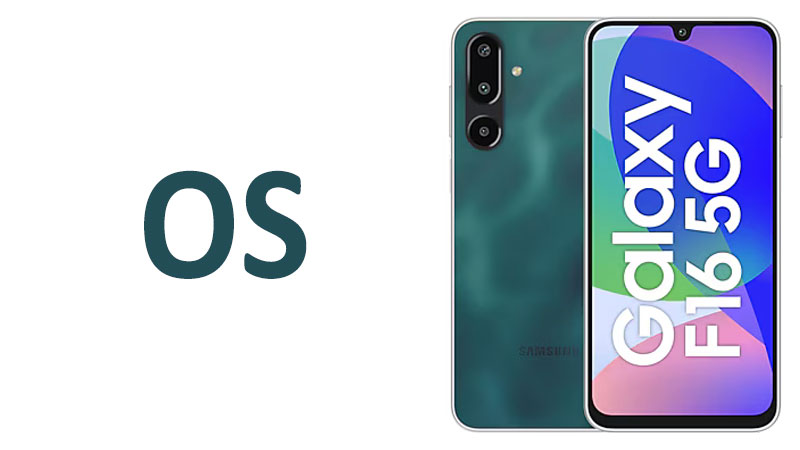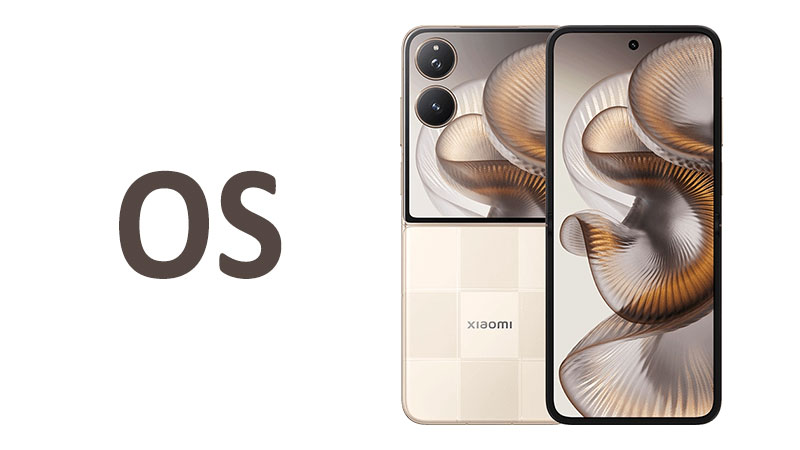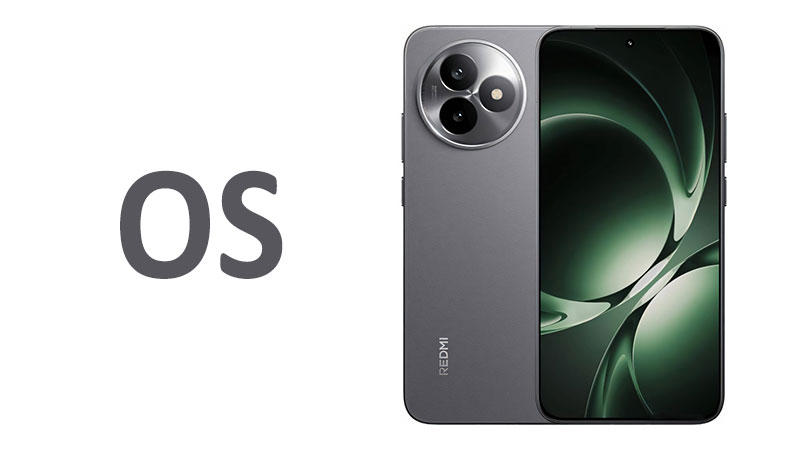The Samsung Galaxy F16 OS marks a pivotal moment for Samsung’s popular F-series lineup. It launches with the latest generation software, combining Google’s Android 15 with Samsung’s powerful custom interface, One UI 7. This combination brings incredible speed, new features, and enhanced security to the mid-range market. Users demand long-term value and top-tier performance, even in budget-conscious devices. The Galaxy F16 aims to deliver this value proposition spectacularly. It promises a massive commitment of up to six major Android OS upgrades, setting a new industry standard for software longevity in this segment. This comprehensive review dives deep into the operating system powering the F16, exploring every crucial detail a potential buyer needs to know. We examine the new features, the subtle redesigns, and the long-term implications of this generational software leap.
The Core Software Platform: Android 15
Android 15 is the foundation upon which the Galaxy F16 experience is built. This iteration of the Android operating system focuses heavily on stability, efficiency, and user control. It introduces many under-the-hood optimizations that drastically improve battery life and app responsiveness. Users will immediately feel the difference in daily usage, from quicker app launches to smoother transitions. Android 15 refines many existing concepts while paving the way for the next era of mobile technology. It ensures the phone remains modern and capable for many years.
Key Innovations in the Android 15 Framework
Android 15 introduces several framework-level changes designed to enhance the overall user experience. One notable feature is the improved handling of background services. The system now manages application processes more aggressively yet intelligently. This prevents rogue applications from draining resources unnecessarily. It ensures that the F16’s processor dedicates its power to the foreground tasks the user actively needs.
The operating system also introduces a refined health connect platform. It offers better aggregation and privacy controls for fitness and health data. Users can now centralize information from various fitness apps with greater confidence in its security. This integration is crucial for users actively monitoring their well-being. Furthermore, Android 15 standardizes predictive back gestures across the system. This allows users to peek at the destination screen before completing a back action. It creates a much more intuitive and fluid navigation experience than previous Android versions offered.
Security and Privacy Enhancements
Security remains a primary focus for Google, and Android 15 delivers significant upgrades. A new level of data protection is implemented, enhancing the built-in sandbox environment for applications. This change severely restricts what apps can access without explicit, granular user consent. The privacy dashboard receives further refinement. It gives users a clearer, more immediate overview of which apps accessed permissions like the microphone, camera, and location.
Another essential security feature is the enhanced theft protection mechanism. Android 15 integrates advanced remote locking and wiping capabilities. These tools become much harder for unauthorized users to disable, even if they physically possess the device. This provides buyers with extra peace of mind, knowing their personal data remains protected. The system also mandates stronger authentication requirements for critical system changes. This makes the Samsung Galaxy F16 a fortress against malicious access.
Performance and Efficiency Gains
The optimization efforts in Android 15 translate directly into tangible performance benefits for the Galaxy F16. Project Mainline updates continue to be expanded. This allows Google to push key security and performance patches directly through the Play Store, bypassing traditional carrier approval delays. The result is a system that stays patched and optimized more frequently.
The operating system includes advanced thermal management tools. These tools work seamlessly with the F16’s hardware to prevent overheating during intensive tasks like gaming or 4K video recording. The system intelligently throttles non-essential processes, maintaining sustained peak performance for longer periods. This avoids the sudden performance drops users sometimes experienced in earlier Android versions. It makes the Galaxy F16 OS experience notably smoother and more reliable under load.
Mastering the Interface: One UI 7
Samsung wraps the core Android 15 experience in its proprietary interface, One UI 7. One UI is recognized globally for its focus on large displays and one-handed usability. One UI 7 continues this tradition while introducing major visual and functional overhauls. It brings the best of Samsung’s unique features and Galaxy AI capabilities to the F16 platform. This layered approach creates a distinct user environment that feels optimized and highly personalized.
Visual Design and Aesthetics
One UI 7 introduces a refreshed visual design philosophy. Samsung utilizes softer colors, innovative blur effects, and more cohesive iconography. The goal is to make the interface easier on the eyes and more intuitive to navigate. App icons and buttons receive a subtle redesign, appearing slightly bolder and more colorful. Widgets now offer more customization options, allowing users to adjust their shape, background color, and transparency. This offers unprecedented control over the home screen’s look and feel.
A significant change occurs in the Quick Panel and Notification areas. Samsung gives users the option for a unified dropdown menu or separated sections for notifications and quick settings. The brightness and volume sliders are now more prominent and larger. This improves accessibility and ease of adjustment, especially for one-handed use on the Galaxy F16’s generous screen size. The vertical scrolling app drawer also returns as a user-requested feature. It streamlines navigation through extensive app libraries.
New Features for Productivity and Multitasking
The productivity suite sees substantial enhancements within One UI 7. Multitasking receives a boost with improved window management in split-screen view. Users can now resize and reposition floating windows with greater precision and less jank. The new “Now Bar” on the lock screen is a standout feature. It provides live, glanceable information akin to Apple’s Live Activities. Users can track workout progress, view map directions, or check sports scores without unlocking the phone. This reduces interaction friction significantly.
Advanced AI writing tools, integrated directly into the Samsung Keyboard, are further improved in One UI 7. These tools offer enhanced spelling and grammar checks, automatic note summarization, and quick text formatting options. This makes generating emails or summarizing long documents much faster and more efficient on the Galaxy F16. Furthermore, One UI 7 enables partial screen recording. Users can select and record a specific area of the screen without capturing notifications or interruptions. This is highly useful for tutorials or detailed bug reporting.
Galaxy-Exclusive Customization and Deep Integration
Samsung’s exclusive features distinguish the F16’s software experience from standard Android 15. One UI 7 brings the Good Lock suite of customization tools into the global spotlight. It makes its modules more accessible and integrates them more tightly with the core operating system. Users gain access to incredibly deep personalization options for the lock screen, navigation bar, and system gestures.
Battery management also evolves with granular control settings. Users can now set the maximum charging level anywhere between 80% and 95%. This protects long-term battery health based on individual usage patterns. It offers a crucial advantage over the simple on/off battery protection modes found in previous One UI versions. The camera application also sees a refreshed interface. It features quicker mode-switching and better control over complex settings like exposure saving for different modes. This ensures the Samsung Galaxy F16 delivers a premium photography experience supported by intelligent software.
Specialized Comparisons and Buyer Considerations
Understanding the Galaxy F16 OS requires placing it in context with its predecessors and current market competitors. The F-series targets users who seek high value, focusing on features like a great display, large battery, and now, exceptional software support. The F16’s software policy is perhaps its most compelling selling point.
F16 vs. Previous Generation (Galaxy F15)
The leap from the Galaxy F15 (likely running Android 14 and One UI 6.1) to the Galaxy F16 is significant. The F15 traditionally received four years of OS updates and five years of security patches. The Galaxy F16, with its six major Android upgrades, drastically alters the device’s lifespan and total cost of ownership. This extended support means the F16 will still receive new features, performance updates, and critical security patches years after the F15 has reached its end of life.
The experiential difference is immediate. One UI 7 on the F16 offers new design elements like the Now Bar and enhanced multitasking. One UI 6.1, while capable, simply does not possess these refined, intelligence-driven features. The performance gains from Android 15’s efficiency optimizations ensure the F16 runs smoother and maintains battery health better than its predecessor did after extended use. Buyers get a more visually appealing, more secure, and far longer-lasting device in the F16.
Comparison with Key Competitors
Samsung’s commitment of six major Android OS upgrades for the Galaxy F16 places it in a highly competitive position. Most rivals in the mid-range segment typically offer only two or three major OS upgrades. The F16’s six-year promise rivals the support offered by Google’s own flagship Pixel line. It surpasses the support offered by most other Android OEMs, including those targeting the same value segment.
This longevity makes the Galaxy F16 a superior choice for users who prioritize sustainability and resale value. A phone still receiving major OS updates remains far more valuable than one that has been left behind on an older Android version. Consumers often choose a device for its hardware specifications. However, the software commitment of the Galaxy F16 is the feature that secures its long-term relevance against all competitors. It transforms the phone from a simple gadget into a genuine long-term investment.
Unprecedented Longevity: The 6-Year Upgrade Promise
The promise of up to six major Android OS upgrades is a landmark commitment for the F-series. This signifies a fundamental shift in how Samsung views its mid-range product line. Previously, this level of support was reserved exclusively for flagship devices like the Galaxy S and Z series. Bringing it to the value-focused Galaxy F16 fundamentally changes the market dynamics.
Defining the Six-Year Commitment
The commitment means the Samsung Galaxy F16, launching with Android 15 (Year 1), will receive updates all the way up to Android 21. This ensures the phone stays current with all major security, feature, and compatibility updates until 2031. It is important to note the scope of this commitment. It covers both major Android OS version jumps and the corresponding One UI versions (up to One UI 13, theoretically). It also guarantees continuous security patches throughout that entire six-year period.
This extended support minimizes the common fear of rapid technological obsolescence. The extended lifecycle allows the F16 to utilize hardware components to their fullest potential over a much longer period. It also demonstrates Samsung’s dedication to reducing electronic waste and promoting device sustainability. Consumers who hold onto their devices for more than three years will see the greatest return on investment from this policy.
Impact on Long-Term Value and Sustainability (Buyer’s Point)
Buyers should recognize this software policy as a critical purchasing factor. The six-year commitment boosts the device’s potential resale value significantly. A three-year-old phone running a current or nearly-current Android version fetches a much higher price than one stuck on an old, unsupported version. The improved longevity also means users avoid forced device replacements simply because necessary applications or services cease supporting the older operating system.
From a sustainability perspective, this commitment aligns with growing environmental consciousness. Users reduce their carbon footprint by using one phone for longer. Samsung encourages consumers to think of their purchase as a durable product rather than a disposable technology item. The Galaxy F16 becomes an economical choice precisely because its software lifecycle is so long. It dramatically lowers the effective yearly cost of ownership. This is a crucial point for the budget-conscious F-series audience.
A Balanced View: Pros and Cons
Every device and its software have unique strengths and weaknesses. The Samsung Galaxy F16 OS, despite its revolutionary update promise, presents both significant advantages and minor considerations for the user. A buyer must weigh these factors to ensure the F16 meets their specific needs.
Advantages of Android 15 and One UI 7
The software offers a vast array of benefits. The six major OS updates provide unmatched longevity in the mid-range. The combination future-proofs the investment and maximizes value over time. Performance sees major benefits from Android 15’s core efficiency gains. The battery life optimizations are a key feature, especially for a device likely marketed for its battery endurance.
One UI 7 offers superior personalization and usability. Features like the customizable Quick Panel and the aesthetic redesign make the phone genuinely feel like a modern, premium product. Galaxy AI integration further enhances productivity through advanced writing tools and smart feature management. The improved security features in Android 15, including enhanced theft protection, offer users industry-leading data safety. The F16 provides peace of mind alongside cutting-edge functionality.
Potential Drawbacks and Considerations
While the software package is robust, potential users must consider a few points. Although the Galaxy F16 receives six major OS upgrades, flagship devices often receive security patches on a monthly schedule for a longer duration than non-flagships. Users need to verify the exact security patch schedule for the F-series model. While the major OS updates are guaranteed, the speed of rollout compared to flagship S-series phones might be slightly slower. Samsung typically prioritizes its premium lines for the initial deployment of new software.
One UI, while highly customizable, can feel heavier than stock Android. It contains a degree of pre-installed applications and services, often referred to as bloatware. Some users who prefer a minimal, lightweight software experience might find the extensive features of One UI 7 overwhelming initially. Learning to navigate and optimize the deep customization settings takes a small investment of time. The trade-off is superior functionality, but it is a consideration for first-time Samsung users.
Conclusion
The Samsung Galaxy F16 OS, built on the solid foundation of Android 15 and layered with the intuitive, feature-rich One UI 7, represents a paradigm shift in the mid-range smartphone category. Its launch with the promise of up to six major Android OS upgrades instantly positions it as the longevity champion in its segment. This commitment future-proofs the device against technological obsolescence and dramatically increases its long-term value for the buyer.
The F16 provides an advanced, secure, and highly personalized experience. Android 15 ensures optimized performance, superior efficiency, and industry-leading security standards. One UI 7 refines the user interface with its aesthetic enhancements, new productivity tools, and powerful Galaxy AI integration. For the value-conscious consumer prioritizing long-term investment, the Galaxy F16 is not just a phone for today. It is a reliable mobile partner that will stay current, secure, and highly functional for many years to come. Buyers gain a compelling combination of premium software features and unparalleled software support.
Frequently Asked Questions (FAQ)
What Android version does the Samsung Galaxy F16 ship with?
The Samsung Galaxy F16 launches with Google’s latest operating system, Android 15, right out of the box. This provides users with the newest features, security protocols, and performance improvements immediately upon purchase.
How many major OS updates will the Galaxy F16 receive?
Samsung guarantees an unprecedented commitment of up to six major Android OS upgrades for the Galaxy F16. This means the phone is set to receive updates all the way up to Android 21, securing its place as one of the most supported mid-range devices ever released.
Does the F16 feature Samsung’s specialized AI functions?
Yes, the Galaxy F16 runs One UI 7, which incorporates the latest versions of Galaxy AI tools. These include advanced AI writing assistance, improved photo editing capabilities, and smart battery management features integrated into the operating system.
How does One UI 7 improve multitasking on the Galaxy F16?
One UI 7 significantly enhances multitasking with refined window management for split-screen and floating apps. It also introduces the “Now Bar” feature on the lock screen. This provides live activities and notifications without requiring the user to fully unlock the device.
Is the software on the Galaxy F16 better than the F15’s software?
Yes, the Galaxy F16 offers a superior software experience. It launches two major versions ahead of its predecessor’s initial OS, featuring Android 15 and One UI 7, which brings new security, efficiency, and design features that the older F15 model does not possess.



